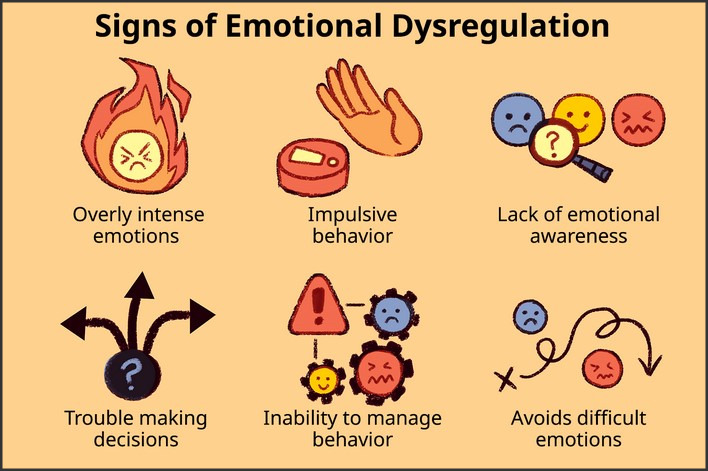
Sympathy fatigue, also known as compassion fatigue, is a phenomenon that occurs when people are exposed to a large amount of suffering or distress. It is a state of emotional exhaustion that can occur when people are exposed to too much suffering or distress. It is a form of burnout that can occur in people who are in a helping profession, such as healthcare workers, social workers, counselors, and teachers. It can also occur in people who are exposed to a large amount of suffering or distress in their personal lives, such as those who are caring for a chronically ill family member or those who have experienced a traumatic event. This article will explore the causes of sympathy fatigue, the signs and symptoms, and strategies for managing it.
How to Recognize the Signs of Sympathy Fatigue: A Guide for Caregivers
As a caregiver, you may be familiar with the feeling of being overwhelmed and exhausted. This is known as sympathy fatigue, and it can be a serious issue for those who provide care for others. Recognizing the signs of sympathy fatigue is essential for caregivers to ensure they are taking care of themselves and their loved ones. This guide will provide an overview of the signs of sympathy fatigue and tips for managing it.
Signs of Sympathy Fatigue
The most common signs of sympathy fatigue include physical, emotional, and behavioral changes. Physical signs may include fatigue, headaches, and difficulty sleeping. Emotional signs may include feeling overwhelmed, irritable, and anxious. Behavioral signs may include withdrawing from activities, avoiding social situations, and neglecting self-care.
Managing Sympathy Fatigue
The best way to manage sympathy fatigue is to recognize the signs early and take steps to reduce stress. Here are some tips for managing sympathy fatigue:
• Take breaks: Make sure to take regular breaks throughout the day to give yourself time to rest and recharge.
• Practice self-care: Make sure to take time for yourself to do activities that you enjoy.
• Reach out for help: Don’t be afraid to ask for help from family and friends.
• Seek professional help: If you are feeling overwhelmed, consider seeking professional help from a therapist or counselor.
• Get enough sleep: Make sure to get enough sleep each night to help reduce stress and fatigue.
By recognizing the signs of sympathy fatigue and taking steps to reduce stress, you can ensure that you are taking care of yourself and your loved ones.
Exploring the Causes of Sympathy Fatigue: What Can We Do to Help?
Sympathy fatigue, also known as compassion fatigue, is a phenomenon that affects those who are exposed to traumatic events or situations on a regular basis. It is characterized by a decrease in empathy and compassion for others, as well as a feeling of emotional exhaustion. This can be especially problematic for those in the helping professions, such as nurses, social workers, and counselors, who are often exposed to difficult and emotionally draining situations.
In order to better understand the causes of sympathy fatigue, it is important to consider the psychological and physiological effects of exposure to traumatic events. On a psychological level, those who are exposed to traumatic events may experience a range of emotions, including fear, guilt, and anger. These emotions can lead to a decrease in empathy and compassion for others, as well as a feeling of emotional exhaustion. On a physiological level, exposure to traumatic events can lead to an increase in stress hormones, such as cortisol and adrenaline, which can lead to physical symptoms such as fatigue, headaches, and difficulty sleeping.
Fortunately, there are a number of strategies that can be employed to help those who are suffering from sympathy fatigue. First, it is important to recognize the signs and symptoms of sympathy fatigue and to take steps to address them. This may include taking breaks from work, engaging in self-care activities, and seeking professional help if needed. Additionally, it is important to create a supportive environment in the workplace, where colleagues can provide emotional support and understanding. Finally, it is important to recognize the importance of self-care and to make sure that those in the helping professions are taking the time to care for themselves.
By understanding the causes of sympathy fatigue and taking steps to address them, we can help those in the helping professions to better cope with the emotional and physical effects of their work. With the right support and understanding, those in the helping professions can continue to provide the necessary care and support to those in need.Sympathy fatigue is a real phenomenon that can have a significant impact on the emotional and physical health of those who are exposed to it. It is important to recognize the signs of sympathy fatigue and to take steps to prevent it from occurring. Taking time for self-care, setting boundaries, and seeking professional help when needed are all important steps to take in order to prevent and manage sympathy fatigue. Understanding the emotional toll of empathy can help us to better support those who are struggling with this condition.



